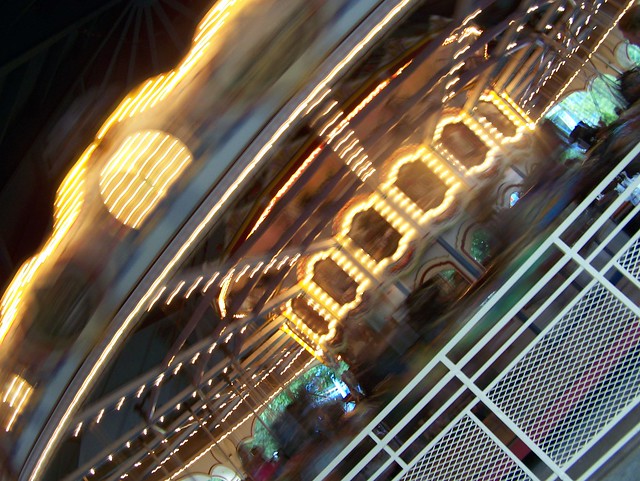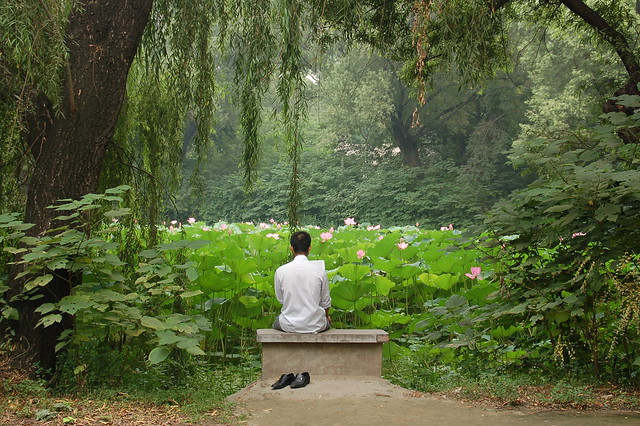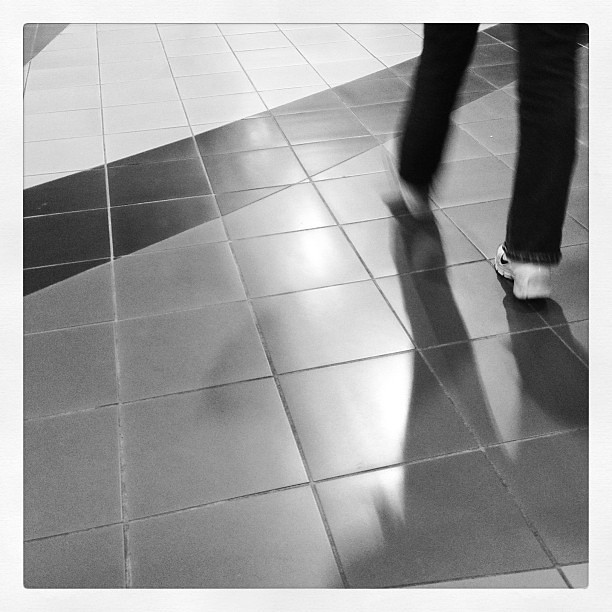- Don't diagnose yourself
- Don't treat yourself.
You can do more harm than good and PPPD is nothing to mess around with. You need to be diagnosed by a physician who is familiar with PPPD and can administer the right diagnostic tests.
 |
| © 2008 Fe Ilya, Flickr | CC-BY-SA | via Wylio |
And don't go to just any physical therapist. He/she needs to have been trained to treat PPPD, because the treatments are very specific. Just any vestibular rehab exercises will not do it. In my case, I met with a PT at Mayo who prescribed a program of exercises I could do myself at home. I just called or emailed him when I had questions, and it worked out well for me. Later, I found a PT in my area who was trained in PPPD, and I found her very helpful too.
For me, the rehab consisted of two types of exercises - balance exercises and VOR (vestibular ocular reflex) exercises, also known as gaze stabilization exercises. I had a specific set of these I did two or three times a day, varying certain factors as my dizziness improved. For example, in the balance exercises, I might have my feet spread apart at first and then worked up to having them together. Or I might increase the length or speed of the VOR exercises. For all of these, the goal is to do just enough to get uncomfortable, but not really dizzy. If you get really dizzy, you've done too much and you haven't helped yourself. I was given this guideline: If the dizziness subsides in 10 minutes, you've done well. If it takes 2 hours, you've done too much. The process is EXTREMELY slow. Dr. Staab at Mayo emphasized I needed to have patience and persistence. The persistence was easy for me, because I was determined to get better. The patience - not so much.
I was told it could take a year to get better. But the doctor said that I could expect to see some improvement after three or four months. When I was at the bottom of the spiral, a year was too overwhelming to think about. So I focused on the three or four month thing. Turns out that was a mistake. The progress after 4 months for me was so slight that I became discouraged many, many, many times. Let me be clear: This. Is. A. Slow. Process!
Baby steps. Tiny baby steps. That's what you have to think about and celebrate. For me it took over a year to get significantly better. But if you stick with it, it does work. It probably varies depending on how long you have had the PPPD when you start the therapy. It took me a year to get in to the Mayo Clinic, so I was in bad shape when I started the rehab. It was clear by the way I walked. I've seen 90 year old women walk faster and more steadily than I did.
What the VOR exercises do is to retrain your brain. That's probably why it takes so long. I mentioned in my post How PPPD Develops that your brain starts to depend on your eyes for balance rather than your inner ears. These exercises actually retrain the brain to use the inner ears for vestibular input. And that can take a while. I did have more rapid success with the balance exercises. And a walking regimen helped a lot with my balance. My gait was the first thing to improve. I guess practice makes perfect.
For me, at least, the dizziness was only part of the picture. I was still left with overwhelming fatigue, and I continue to work on that. But I celebrate all my victories.
For me, at least, the dizziness was only part of the picture. I was still left with overwhelming fatigue, and I continue to work on that. But I celebrate all my victories.
Leave your questions and comments. I'd love to hear from you. And if this helps you, please share it using the buttons below! Thanks!







